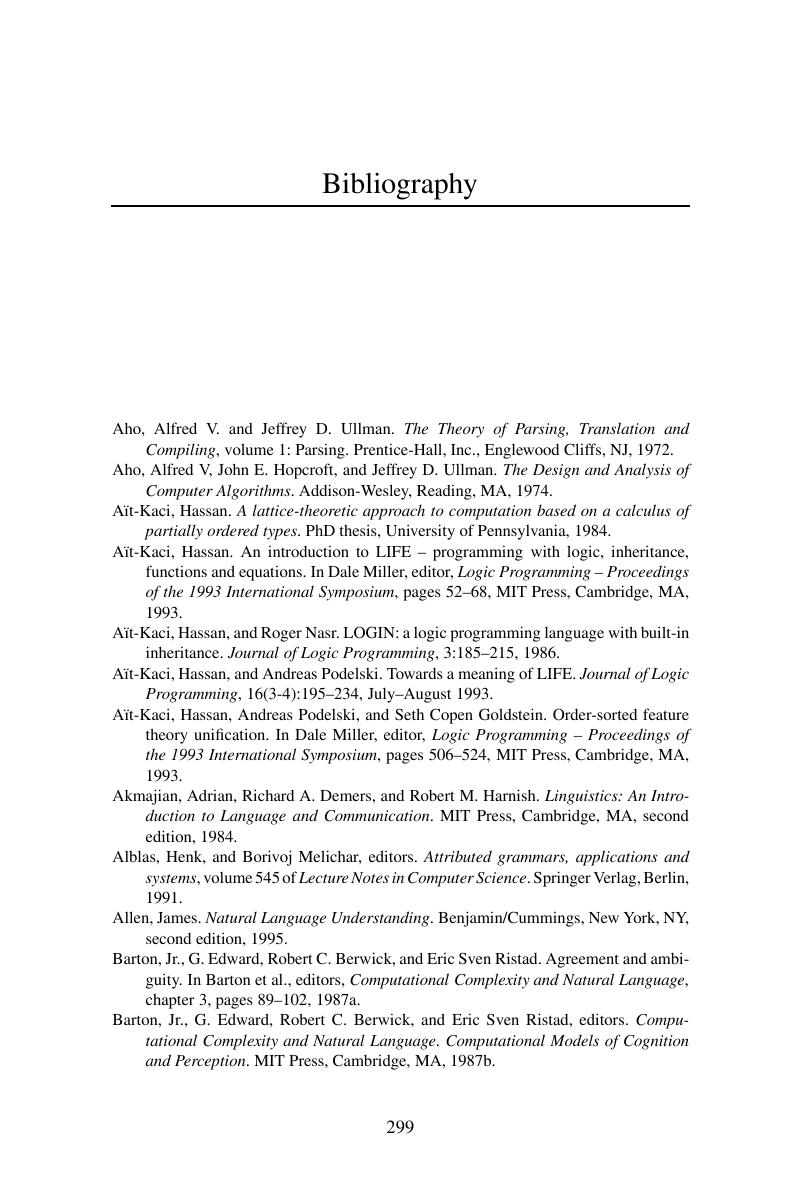Book contents
- Frontmatter
- Contents
- Preface
- Acknowledgments
- 1 Introduction
- 2 Feature structures
- 3 Unification
- 4 Unification grammars
- 5 Linguistic applications
- 6 Computational aspects of unification grammars
- 7 Conclusion
- Appendix A List of symbols
- Appendix B Preliminary mathematical notions
- Appendix C Solutions to selected exercises
- Bibliography
- Index
- References
Bibliography
Published online by Cambridge University Press: 25 October 2011
- Frontmatter
- Contents
- Preface
- Acknowledgments
- 1 Introduction
- 2 Feature structures
- 3 Unification
- 4 Unification grammars
- 5 Linguistic applications
- 6 Computational aspects of unification grammars
- 7 Conclusion
- Appendix A List of symbols
- Appendix B Preliminary mathematical notions
- Appendix C Solutions to selected exercises
- Bibliography
- Index
- References
Summary

- Type
- Chapter
- Information
- Unification Grammars , pp. 299 - 306Publisher: Cambridge University PressPrint publication year: 2011

